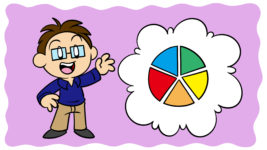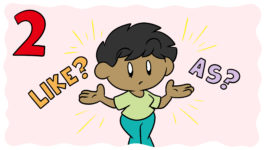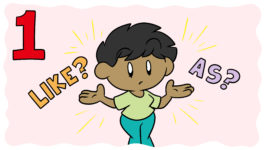The thing about writing in the genre of speculative fiction (science fiction, fantasy, magical realism, fairy tale, steampunk, urban fantasy, etc.) is that you have to ask the reader to suspend what they know to be true about the world. In a mystery, it’s not difficult for a reader to believe that Harry killed Mike on Saturday. However, if Harry floated over to Mike’s island on his power crystals and killed Mike with his ray gun, the reader has to make a few more imaginative leaps.
So, how do we make the reader believe in a world with two suns? How do we create something that is compelling and unique? Here are three practical tools that will keep your readers invested and your story and setting believable.
1. Details details details
You’ve been told about details before, but that doesn’t mean they’re not important, especially for speculative fiction. The trick is balancing that fine line between too many details and just enough. (Hint: err on the side of too many, you can always “kill your darlings” in the editing process.)
While characters are undoubtedly the most important part of story, let’s face it, in speculative fiction, the magic system, the history, and the world become characters themselves. You don’t need to fill your pages with endless details that bog down the storyline, but well-handled description can keep a reader invested.
In Lev Grossman’s novel, The Magicians, we get a detailed description of curtains:
And those nice, surprisingly Pottery Barn-y curtains, the color of the stems of plants. . . . As he lay there Quentin’s uppermost thought was that these were authentically coarse-woven curtains, woven by people who didn’t know any other way of making curtains, who didn’t even know that their way was special, and whose way was therefore not discounted and emptied of meaning in advance (pg. 369).
In this quote, Grossman makes these curtains come to life. Not only are we able to see the Pottery Barn style, the green color, and the coarse weave, but we get something of a history of these curtains as well. They become real. It’s hard to doubt them. Yet, you wouldn’t have guessed that these curtains are in a Narnia-like world, in a hospital run by centaurs. The strange thing is, by making these curtains so tangible, Grossman has managed to make the world in which they exist—and, by extension, the centaurs—real. How could anything be fake in a world inhabited by such realistic and palpable curtains?
Whether it’s a spaceship, a floating island, or a hospital populated by centaurs, if we fill our world with tactile sensations, visual descriptions, and details, then readers will believe in it.
2. Using characters in your world-building
This same theory also applies to characters. Providing enough detail and backstory for your characters makes them both real and interesting. But, as with details, it has a third effect you might not have thought about. It adds believability to your world and your magic. By creating realistic and relatable characters with wants, flaws, and histories, the reader will be less likely to doubt your world because it is inhabited by people they can love, hate, relate to, and understand.
Secondly, an important trick to use to make your world and the magic/technology within it more engaging and believable is to have it hinge on character. What I mean is, while magic and new technology are fun, if they serve no other purpose, they may not warrant inclusion in your novel. However, if the magic affects your character in a significant or emotional way, it becomes more vital to the story.
In a short story by Aimee Bender (The Girl in the Flammable Skirt), the magic works intimately with the character:
My lover is experiencing reverse evolution . . . one day he was my lover and the next he was some kind of ape. It’s been a month and now he’s a sea turtle (pg. 3).
In this story, the magic surrounding the protagonist’s boyfriend is deeply connected to his character. While this “reverse evolution” is fascinating, it also reflects his feelings toward society as a whole:
On his last human day, he said, “Annie, don’t you see? Our brains are just gettin bigger and bigger, and the world dries up and dies when there’s too much thought and not enough heart” (pg. 4).
In this quote, we see that his transformation is a physical manifestation of his emotional state. He thinks the world is drying up because humanity is getting too big, too advanced, and too greedy; therefore, he experiences a reversal of this process. While you don’t have to go to this extent when connecting your magic to your character, it works as a great example of how emotion, character, and magic/technology can work in tandem to create something unique and compelling.
3. Introducing the world (or science, or magic, etc.)
Ok, so let’s assume that you’ve got your world figured out. You know how the magic or the technology works, you know the history, the politics, the characters, and the details. Usually, coming up with this stuff isn’t the problem. It’s the fun part. How all of this is introduced is often the place where these types of stories fall flat. The problem is, writers tend to get too excited about their creativity and want to give the reader as much information as they can about how awesome their world is. Fair enough. The problem is, too much history or explanation up front, rather than immersing your readers, gives them the chance to doubt your world.
In a short story, Pastoralia, by George Saunders, he starts off with a bang:
I have to admit I’m not feeling my best . . . I’m sitting back on my haunches, waiting for people to poke in their heads. Although it’s been thirteen days since anyone poked in their head and Janet’s speaking English to me more and more, which is partly why I feel so, you know, crummy (pg. 1).
Again, this is something of an extreme example. Here, Saunders literally throws the reader into his world without any explanation of how things work. As the story unfolds, we learn that we are in a sort of futuristic or alternate world where museums are populated by actors that literally live, day in and day out, in the museum displays. If Saunders had explained this to the reader in the beginning, we could have easily doubted the plausibility of such a setting. However, by starting with character and emotion: “I have to admit I’m not feeling my best,” we get to know the character first, and then we watch as the setting unfolds.
The best speculative fiction throws the reader in. It says, this is the way things are, deal with it. It takes off running with interesting characters and an intriguing story while letting the history and backstory simmer under the surface. Start with character, start with action, and let the world, technology, and magic system slowly unravel as the story goes. By the time the reader has started to figure the world out, you will have given them characters they love, details they believe in, and a story they don’t want to put down. They won’t have time to doubt the magic.
Our New Sun
Overall, the goal is to get your readers to believe and be fascinated by your new world. Details, character, and the manner in which you introduce the magic/technology are the most important tools for accomplishing this. So when your characters run into a bear that starts complaining about how hot the second sun is, your readers won’t say “A talking bear? A second sun? Yeah right.” They’ll be invested in your world, they’ll love and/or hate your characters, and they’ll believe your story. They’ll be thinking, “Poor bear, I bet that new sun really is quite warm.”
What types of worlds/magic/technology have you created in your fiction? Did you find it easy to write in such a setting? Leave a comment below, I’d love to hear about it.






8 thoughts on “Speculative Fiction World-building Techniques You Need To Know”
Tyrell, great piece. And yes, writing speculative fiction-although freeing in the sense one starts with a blank slate-is, in my humble opinion, the trickiest genre to write. And had I known as much as a novice, I think I would have opted for something easier!
In my world building, I didn’t go into detail about the economic or political infrastructures of the nations but instead, provided an overview of what was going on. My focus was on the characters navigating such terrain as well as the magic (or lack thereof) in the storyline.
That’s great! And it definitely is a tricky beast to write. Not everyone appreciates that.
It’s amazing how much readers can learn of your culture/magic when you reveal world by, as you say, focusing on your characters navigating through it. People don’t want a history lesson right? They want characters.
While I don’t do a lot of fantasy writing, I do love to delve into fascinating worlds of fantasy in my reading and coaching. I’m working with a gal right now – her first book – and she knows her world, she just want express it to her readers in a way that sucks us in. Thank you for your article. I’ll recommend that she read it.
Thanks Carol! It’s a fun genre to read/work with. I hope she finds it helpful.
I’ve recently discovered the world of Steampunk and find it really pokes at my creativity. I have started writing details of my character and maybe evolve that into some kind of story. I’m debating on the alternate reality… Just trying to make everything fit together but not sure where to start.
I’m definitely a novice writer, I am a college student but not majoring in anything related to writing. I love reading science fiction novels though, I find myself in thought of what I would have done differently or would have liked to see from the story. So thought why not try and write something myself!
Reading your article has helped me out immensely. I have my general plot and technology/magic figured out, but had not really thought about development of the world or worlds in my case. I briefly brushed on character development but had not put a ton of detail into it. Now I realize I need to focus more on character and world detail rather than the technology/magic side. So thank you for the advice. Who knew I would want to write about such a hard topic!
Great tips. I love creating magic or cool technology and likeable characters. But the toughest part for me is finding a worthy goal or situation to challenge my characters. Nailing down the plot and making the problem or goal important enough to sustain a novel is key.
Maybe it’s just me, but I find the world-building the easiest thing to do when it comes to the fantasy genre. Making up new cultures, languages, and planets has never been hard for me. It’s the fact that I have to describe it to someone else that gets me. In my head, I picture a beautiful landscape, but when I try to describe it, I make it sound like a kindergarteners macaroni art.
Does anyone else have this problem?